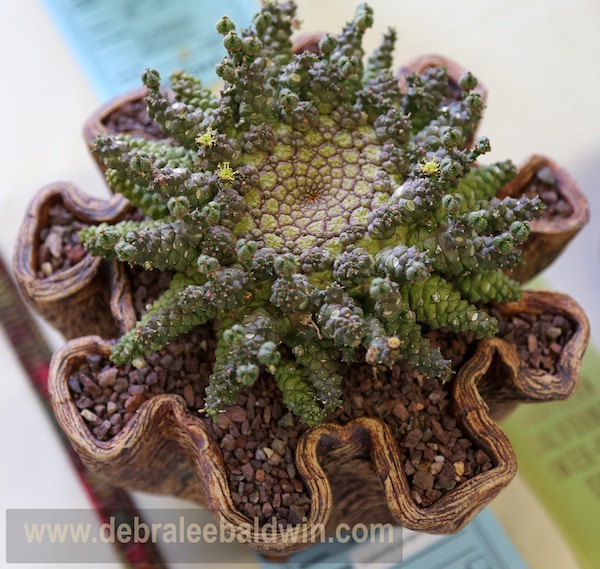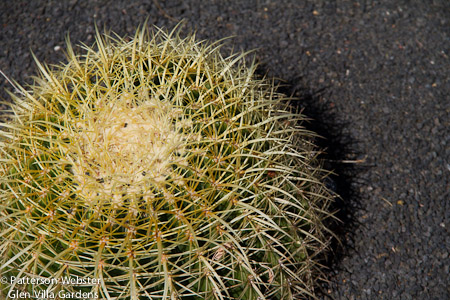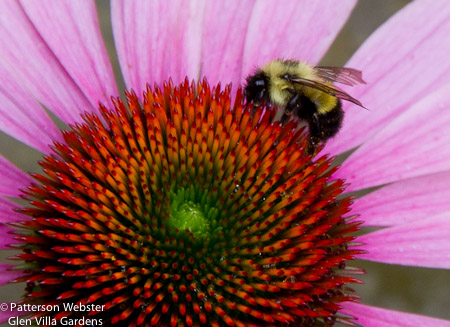Ever since writing in a recent post about Througham Court and how Christine Facer Hoffman, the owner and designer, incorporated Fibonacci numbers into the garden, I’ve been noticing photos of plants that illustrate this natural sequencing. Deborah Lee Baldwin showed this one in a recent entry on Gardening Gone Wild.
 |
| Apparently this plant is euphorbia gorgonis. Who would have known? Not me. |
And I saw this one in my own garden, in a gravel section I’m playing around with.
 |
| sempervivum arachnoideum ‘Cobweb’ |
This sempervivum is named ‘Cobweb.’ A close look at the central white portion tells you why.
The tell-tale Fibonacci spiral appears in a cactus in California…
 |
| A prickly spiral on a barrel cactus. |
and in the centre of an echinacea at Glen Villa. Here it is accompanied by a bee whose DNA or parentage also demonstrates the same phenomenon. Or so I read. (It isn’t that complicated but it involves sex, or gender at least. Female bees have more great-grandparents than male bees — and the numbers of each are themselves Fibonacci sequence numbers. You can read all about it here.)
 |
| An echinacea named ‘Magnus’ with a bee who didn’t give me his name. Shall I call him Honey? Maybe Bumble is better. |
On-line entries tell me that Fibonacci numbers constitute nature’s own numbering system. They appear in the leaf arrangement in plants, the bracts of a pinecone and the scales of a pineapple, as well as in the unfurling of fern fronds.
 |
| Ferns dancing in early spring |
Why do some plants grow this way? If it is more efficient, as some on-line sources claim, why don’t all plants grow in the same way? Does it maximize the light that falls on each leaf, or give each its full space?
The on-line entries about fibonacci numbers are too mathematical for me. I just like to look at them in real life.
The other thing I like to look at: your responses to the on-line survey. Many of you took the time to respond, and I truly thank you. This is the last week I’ll mention this (do I sound like a fundraiser for PBS? I don’t mean to), so if you haven’t taken the survey yet, please do it now by clicking here. I’m excited by the number of responses and by the ideas that you’ve suggested, and I know the blog will be more interesting to read because of your input. Perhaps next week I’ll share the results.






